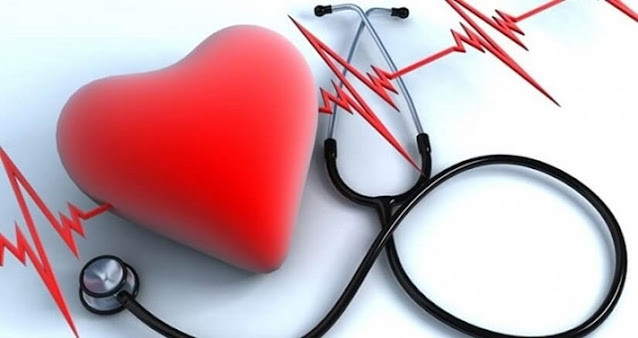Heart Attack Symptoms And Prevention?
A heart attack (heart attack) occurs when the flow of oxygen-rich blood to the heart is blocked. It is caused by fats, cholesterol, and other substances forming plaque in the arteries that carry blood to the heart (coronary arteries) and block them. Due to the interrupted blood flow, the heart does not get oxygen and if the heart does not get oxygen quickly, then the heart muscles are destroyed.
One person dies of heart attack every 33 seconds in India. In India there are about 20 lakh cases of heart attack in a year.
There are 3 types of heart attacks:
1.ST Segment Elevation Myocardial Infarction (STEMI) : ST Segment Elevation Myocardial Infarction (STEMI) : STEMI causes pain in the center of the chest. There is no intense pain but a feeling of pressure and stiffness. Some people also feel pressure and tightness in the arms, throat, jaw and back.
2.Non-ST Segment Elevation Myocardial Infarction (NSTEMI): In NSTEMI, the coronary arteries are partially blocked. There is no change in the ST segment in the electrocardiogram from NSTEMI.
3. Unstable angina or coronary spasm: Symptoms are similar to STEMI but are mostly ignored as dyspepsia or muscle pain. When the arteries of the heart are narrowed, the flow of blood to the heart is stopped or reduced. The diagnosis of unstable angina is made only by imaging or blood tests. Coronary spasm does not cause any dangerous harm, but it does increase the risk of having a heart attack again.
The symptoms of a heart attack are as follows:
Feeling of pressure, tightness, or pain in the chest or arms that may spread to your throat, jaw, and back.
Nausea, dyspepsia, heartburn, abdominal pain.
Difficulty in breathing.
Having a "cold sweat" (sweating due to fear, anxiety, or illness).
Fatigue.
dizziness.
The symptoms of a heart attack are not common to all people. Chest pain is always intense but some people may also feel very little pain as is felt in dyspepsia.Heart Attack Symptoms And Prevention in hindi .Some people (especially women, the elderly and those with diabetes) do not feel pain at all.
Due to heart attack
A heart attack occurs when one or more of your coronary arteries become blocked. Coronary arteries can become narrowed due to the accumulation of cholesterol and many other substances. This condition is called coronary artery disease and is the cause of most heart attacks.
During a heart attack, plaque (a sticky deposit) can burst and, cholesterol and many other substances can spread into the bloodstream. A blood clot forms where the plaque ruptures. If this clot is large, it can completely block blood flow.
Another cause of a heart attack is coronary artery spasm, which blocks the flow of blood to the heart muscle. Tobacco and illegal drugs such as cocaine can cause life-threatening convulsions. Spontaneous coronary artery dissection can also cause a heart attack.
Heart Attack Prevention
To lower your risk of heart attack:
To reduce your risk of a heart attack and to improve the function of your damaged heart, use the medicines prescribed by your doctor and continue with your doctor.
Along with a healthy diet, maintain a healthy weight, don't smoke, exercise daily, don't take too much stress, and control problems like high BP, high blood cholesterol levels and diabetes. (Read more: Simple ways to quit smoking).Heart Attack Symptoms.If you have diabetes, use the prescribed medicines and keep checking your blood sugar level. Consult your doctor if you have any heart disease and use the medicines as prescribed by the doctor.
Heart attack treatment
Treatment of a heart attack will depend on the type of heart attack you have.
ST Segment Elevation Myocardial Infarction (STEMI) is the most serious type of heart attack and requires emergency treatment to reduce the damage caused by the heart attack.
If you're having symptoms of a heart attack and your electrocardiogram (ECG) results prove you have a STEMI, treatment will be done to open your coronary arteries.
Heart attack is treated by:
If you have been experiencing symptoms for the past 12 hours, you will be treated with Primary Percutaneous Coronary Intervention (PCI).Heart Attack Symptoms And Prevention?
If you have been experiencing symptoms for more than 12 hours, then the treatment given to you will be decided after the angiogram. You may be given PCI or medication, or you may have bypass surgery.
Some of the surgical procedures for the treatment of heart attack are as follows:
Angioplasty: A blocked artery is opened using a balloon or by removing the blocking material.
Insertion of a stent: After angioplasty, a type of tube (stent) is inserted into the blocked area to keep the artery open.
Bypass surgery: Surgery to supply blood flow to the blocked part of the heart.
Heart valve surgery: Surgery to replace the valve that is leaking.
Pacemaker surgery: Abnormal heart rhythm is controlled with the help of a pacemaker.
Heart transplant: This is done in severe cases when the heart tissue is completely destroyed due to a heart attack.
_I hope this article is helpful for you please comment your words 👍



Post a Comment